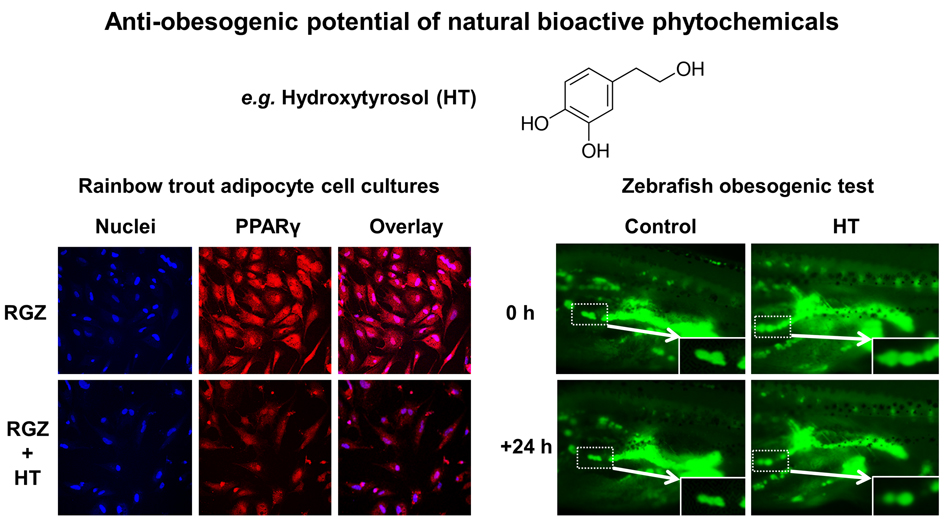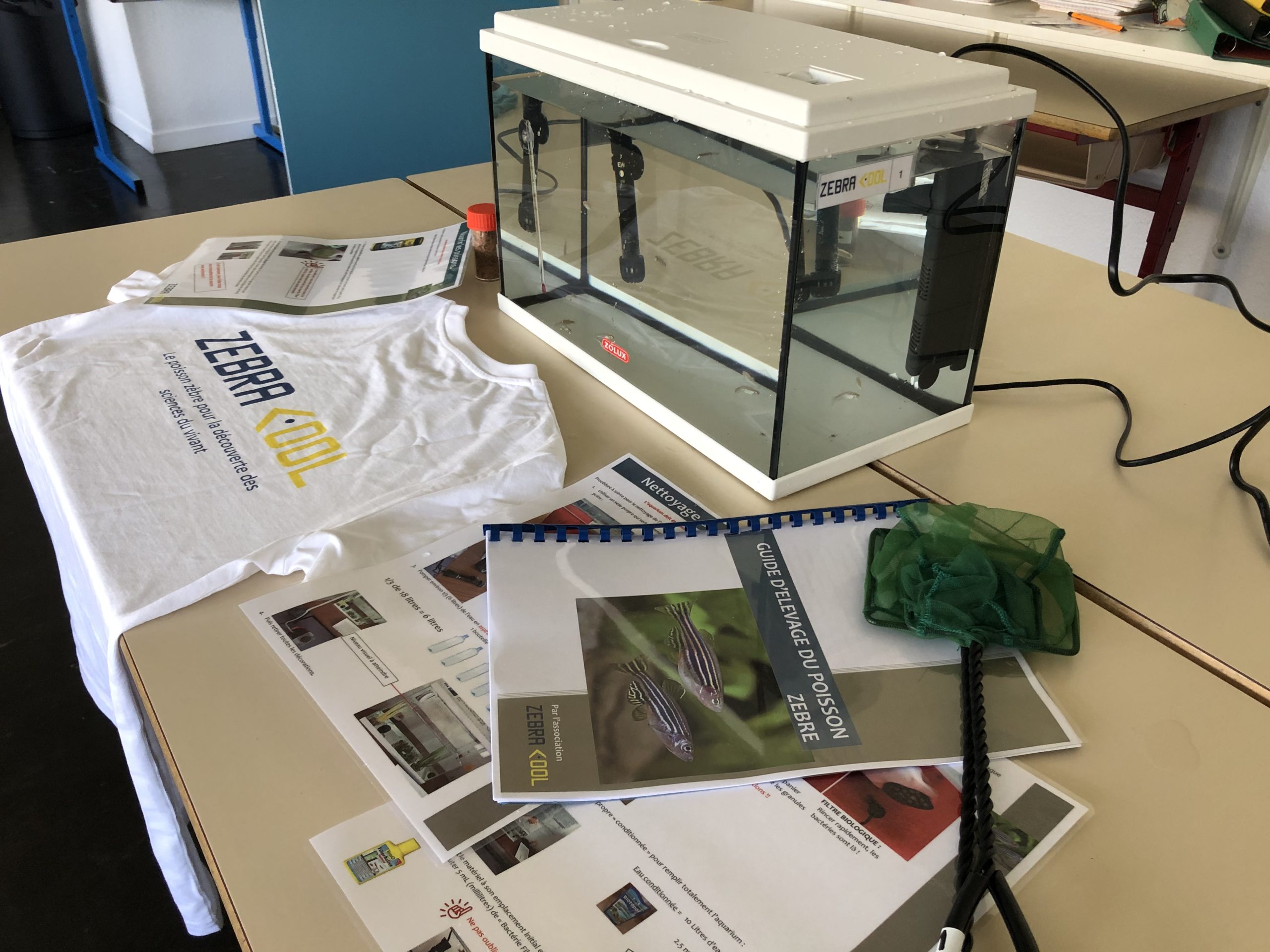Le laboratoire MRGM, partenaire de ZebraCool, publie un nouveau test utilisant le poisson zèbre pour identifier les facteurs obésogènes et des molécules capables de lutter contre l’obésité.
Caffeic acid and hydroxytyrosol have anti-obesogenic properties in zebrafish and rainbow trout models
Lutfi E, Babin PJ, Gutiérrez J, Capilla E, Navarro I.
PLos One 12:e0178833, 2017.
doi: 10.1371/journal.pone.0178833
PMID: 28570659
Abstract: Some natural products, known sources of bioactive compounds with a wide range of properties, may have therapeutic values in human health and diseases, as well as agronomic applications. The effect of three compounds of plant origin with well-known dietary antioxidant properties, astaxanthin (ATX), caffeic acid (CA) and hydroxytyrosol (HT), on zebrafish (Danio rerio) larval adiposity and rainbow trout (Onchorynchus mykiss) adipocytes was assessed. The zebrafish obesogenic test (ZOT) demonstrated the anti-obesogenic activity of CA and HT. These compounds were able to counteract the obesogenic effect produced by the peroxisome proliferator-activated receptor gamma (PPARγ) agonist, rosiglitazone (RGZ). CA and HT suppressed RGZ-increased PPARγ protein expression and lipid accumulation in primary-cultured rainbow trout adipocytes. HT also significantly reduced plasma triacylglycerol concentrations, as well as mRNA levels of the fasn adipogenic gene in the adipose tissue of HT-injected rainbow trout. In conclusion, in vitro and in vivo approaches demonstrated the anti-obesogenic potential of CA and HT on teleost fish models that may be relevant for studying their molecular mode of action. Further studies are required to evaluate the effect of these bioactive components as food supplements for modulating adiposity in farmed fish.
Article link: http://journals.plos.org/plosone/article?id=10.1371/journal.pone.0178833
Un deuxième article
Pharmacological evaluation of the mechanisms involved in increased adiposity in live zebrafish triggered by the environmental contaminant tributyltin.
Ouadah-Boussouf N, Babin PJ.
Toxicology and Applied Pharmacology 294, 32-42, 2016.
doi: 10.1016/j.taap.2016.01.014
PMID: 26812627
Abstract: One proposed contributing factor to the rise in overweight and obesity is exposure to endocrine disrupting chemicals. Tributyltin chloride (TBT), an organotin, induces adipogenesis in cell culture models and may increases adipose mass in vivo in vertebrate model organisms. It has been hypothesized that TBT acts via the peroxisome proliferator activated receptor (PPAR)γ-dependent pathway. However, the mechanisms involved in the effects of TBT exposure on in vivo adipose tissue metabolism remain unexplored. Semitransparent zebrafish larvae, with their well-developed white adipose tissue, offer a unique opportunity for studying the effects of toxicant chemicals and pharmaceuticals on adipocyte biology and whole-organism adiposity in a vertebrate model. Within hours, zebrafish larvae, treated at environmentally-relevant nanomolar concentrations of TBT, exhibited a remarkable increase in adiposity linked to adipocyte hypertrophy. Under the experimental conditions used, we also demonstrated that zebrafish larvae adipose tissue proved to be highly responsive to selected human nuclear receptor agonists and antagonists. Retinoid X receptor (RXR) homodimers and RXR/liver X receptor heterodimers were suggested to be in vivo effectors of the obesogenic effect of TBT on zebrafish white adipose tissue. RXR/PPARγ heterodimers may be recruited to modulate adiposity in zebrafish but were not a necessary requirement for the short term in vivo TBT obesogenic effect. Together, the present results suggest that TBT may induce the promotion of triacylglycerol storage in adipocytes via RXR-dependent pathways without necessary using PPAR isoforms.
Article link: http://www.sciencedirect.com/science/article/pii/S0041008X16300096
Contact: Pr. Patrick J. Babin, Laboratoire Maladies Rares : Génétique et Métabolisme (MRGM), Université de Bordeaux, INSERM U1211, Allée Geoffroy St-Hilaire, Bat. B2, 2ème étage, CS 50023, 33615 Pessac cedex, France. Email: patrick.babin@u-bordeaux.fr



